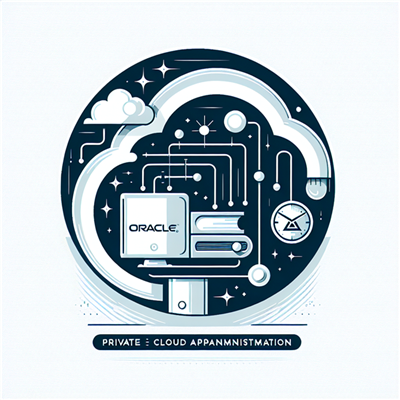
In the rapidly evolving world of technology, scalability is a cornerstone for successful applications. Traditional infrastructure often struggles to cope with dynamic traffic loads, leading to inefficiencies and increased costs. This is where AWS Serverless architecture shines, offering seamless scalability without the need for constant infrastructure management.
AWS serverless services, such as AWS Lambda, Amazon DynamoDB, and Amazon API Gateway, enable applications to scale automatically in response to demand. But what does it take to scale efficiently while maintaining performance and cost-effectiveness? In this blog, we’ll explore best practices for scaling applications with AWS Serverless solutions.
Why Choose AWS Serverless for Scalability?
AWS serverless architecture inherently supports scalability by design. Here’s why:
-
Auto-Scaling Capabilities
Services like AWS Lambda automatically scale based on the number of incoming requests. There’s no need to provision servers or manage capacity manually. -
Cost-Efficiency
AWS serverless operates on a pay-as-you-go model. You pay only for the compute power or storage you use, making it ideal for scaling applications cost-effectively. -
High Availability
Built-in high availability ensures that your application remains responsive even during unexpected traffic surges. -
Reduced Operational Overhead
Developers can focus on building features rather than managing infrastructure, as AWS handles scaling and infrastructure maintenance.
Best Practices for Scaling with AWS Serverless
To maximize the benefits of AWS serverless architecture, follow these best practices:
1. Design for Event-Driven Architecture
AWS serverless works exceptionally well with event-driven designs. Using Amazon EventBridge or AWS SQS, you can trigger Lambda functions and other services in response to events.
Key Tips:
- Decouple application components to handle traffic spikes better.
- Use event streams like Amazon Kinesis for real-time data processing.
2. Optimize AWS Lambda Functions
Lambda functions are at the heart of AWS serverless. Optimizing them ensures that your application scales effectively.
Best Practices for Lambda Optimization:
-
Set Appropriate Memory and Timeout Values:
Allocate enough memory and set realistic timeouts to handle workloads efficiently. -
Minimize Cold Starts:
Use provisioned concurrency for critical functions to reduce latency during cold starts. -
Monitor Performance:
Use AWS CloudWatch Logs and AWS X-Ray to identify bottlenecks and optimize performance.
3. Use Amazon DynamoDB for Scalable Storage
Amazon DynamoDB is a fully managed NoSQL database that can handle millions of requests per second.
DynamoDB Scalability Tips:
-
Enable Auto Scaling:
Configure DynamoDB to automatically adjust read and write capacity based on demand. -
Use Global Tables:
For applications with a global user base, global tables ensure low-latency access across regions. -
Optimize Query Performance:
Design tables with proper indexing and partitioning to improve query speed.
4. Implement API Rate Limiting with Amazon API Gateway
API Gateway acts as the front door for serverless applications. It allows you to define rate-limiting policies, preventing overuse during traffic spikes.
API Gateway Best Practices:
- Set up throttling policies to limit the number of requests per user.
- Use caching to reduce load on backend services and improve response times.
5. Utilize Distributed Caching with Amazon ElastiCache
For applications requiring frequent data retrieval, caching can significantly improve scalability. Amazon ElastiCache provides a managed caching layer using Redis or Memcached.
Benefits of Caching:
- Reduce database load during peak usage.
- Improve application response time.
6. Monitor and Optimize Costs
Scaling applications shouldn’t lead to runaway costs. AWS provides several tools to monitor usage and optimize expenses.
Cost Management Tips:
- Use AWS Cost Explorer to identify cost drivers.
- Implement AWS Budgets to set spending limits and get alerts.
- Review Lambda execution times and optimize code to reduce costs.
7. Leverage AWS Step Functions for Complex Workflows
AWS Step Functions enable you to build and scale workflows by orchestrating multiple Lambda functions.
Why Use Step Functions for Scaling?
- Simplifies complex workflows.
- Automatically retries failed tasks, improving reliability.
- Scales seamlessly with the workload.
8. Secure Your Application
Security is critical, especially when scaling. Ensure your serverless application is resilient against potential threats.
Serverless Security Best Practices:
- Implement IAM roles and policies for fine-grained access control.
- Use AWS WAF to protect against common web exploits.
- Encrypt sensitive data at rest and in transit using AWS Key Management Service (KMS).
Real-World Use Case: Scaling an E-Commerce Application
Consider an e-commerce platform experiencing a surge in traffic during a sale. By leveraging AWS serverless:
- Lambda functions automatically scale to handle thousands of simultaneous checkout requests.
- DynamoDB adjusts its capacity to process high-volume transactions without downtime.
- API Gateway enforces rate limits, ensuring fair usage for all users.
- ElastiCache reduces latency by caching frequently accessed product data.
Advantages of Scaling with AWS Serverless
- Flexibility: Scale up or down instantly without manual intervention.
- Resilience: Built-in fault tolerance ensures uninterrupted operation.
- Cost Control: Pay only for what you use, even during traffic spikes.
Conclusion
Scaling applications with AWS serverless solutions offers a combination of flexibility, reliability, and cost-efficiency. By implementing best practices, businesses can ensure their applications remain robust and responsive, even under dynamic workloads.
Whether you’re building a new application or modernizing an existing one, AWS serverless provides the tools to meet scalability challenges with ease. Invest time in designing an event-driven architecture, optimizing Lambda functions, and leveraging tools like DynamoDB and API Gateway to unlock the full potential of serverless technology.
Learning how to leverage AWS Serverless for scaling applications can be a game-changer for your organization. Koenig Solutions, a leading IT training company, offers comprehensive training on AWS Serverless and other top technology courses. This training will equip you with the necessary skills to architect and build scalable applications using AWS Serverless.
In today's competitive landscape, staying ahead means staying updated. Learn AWS Serverless with Koenig Solutions and scale your applications to new heights!







COMMENT